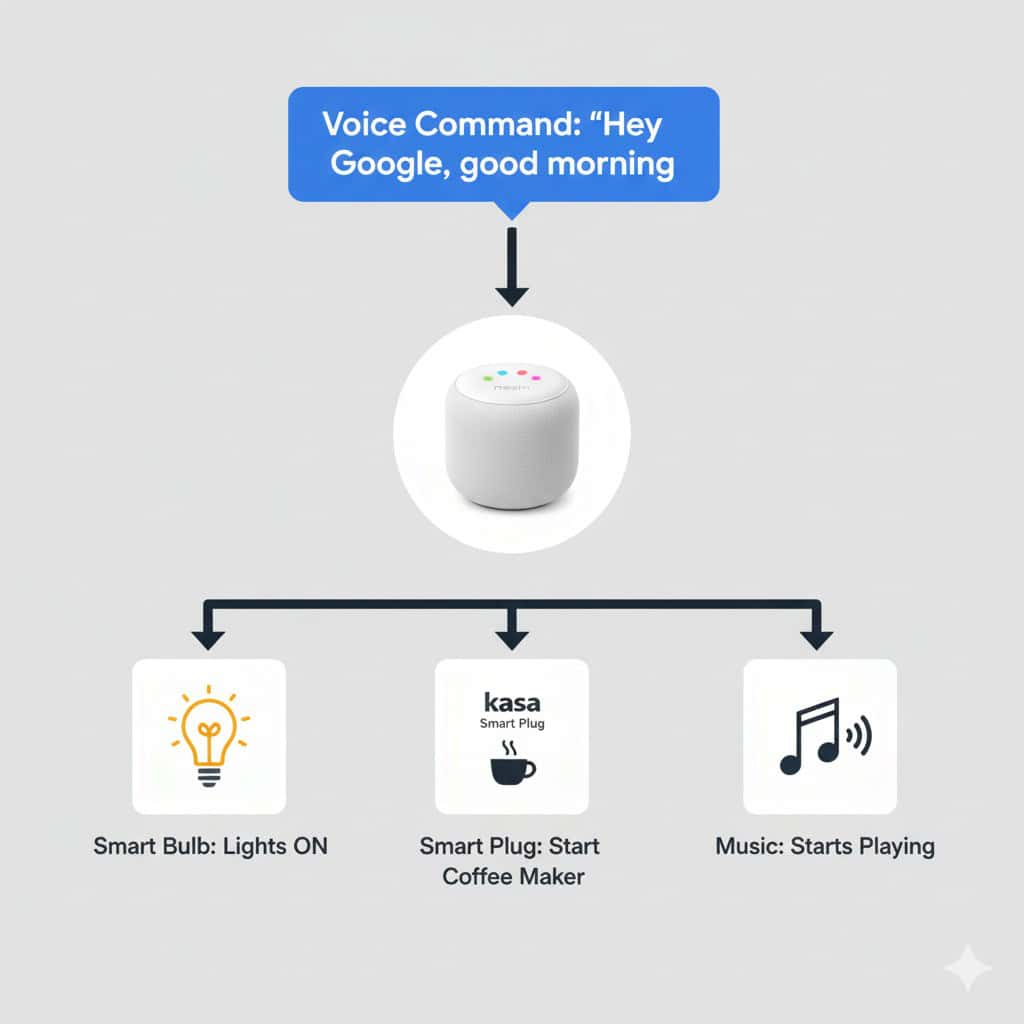Three simple changes that really improve your life in a smart home
Do you ever feel what I call “tech anxiety” when you walk down the electronics aisle? There are a lot of flashing boxes in front of you, and they all promise to change your life. Everything is smart now: lights, plugs, speakers, and more. It’s exciting, but it’s also too much.
How do you even start? What if you spend hundreds of dollars and end up with a complicated mess that only someone with an IT degree can fix?
Let’s take a deep breath and start over. It doesn’t have to be hard or expensive to make your home smart. The goal isn’t to live in a lab run by robots from the future. It’s about making your daily life a little bit easier, safer, and more fun.
This is a guide that doesn’t use any jargon to help you get started. We’ll talk about three simple, cheap upgrades that will make your home look amazing right away.
What does it mean for a home to be “smart”?
Let’s change the goal before we buy anything. A truly smart home does three things very well:
Convenience: It takes care of small, repetitive tasks for you. It knows what you need. Think about how the lights come on by themselves when you get home with groceries.
Efficiency: It saves you money and energy without you having to do anything. A thermostat that knows when you’re home and when you’re not and changes the temperature to match.
Peace of Mind: It makes you feel safe, no matter where you are. Imagine getting a message on your phone when a door opens without warning.
Anything that doesn’t help one of these three pillars is just a trick. Our plan is to start with devices that really get these basics right.
The Best First Three Smart Home Upgrades for Beginners
Don’t worry about remodeling your whole house. Let’s start with three small things you can buy that will make you feel like a tech genius in less than an hour.
1. Smart Lighting: Change the Mood Right Away
What it is: You can control LED bulbs that connect to Wi-Fi (like Philips Hue or Wyze) with your phone or your voice.
Why it’s a good first step: It’s very easy to set up—just screw in a lightbulb. The reward is quick and enjoyable. You can change the color of your lights as well as how bright they are.
Some easy things to try are:
Set the scene for “Movie Night” by dimming the lights to 30% and changing the color to a warm blue with a single tap or voice command.
“Wake-Up” Routine: Set your bedroom lights to slowly fade in over 15 minutes before your alarm goes off, like the sun rising. It’s a much more gentle way to get up.
For safety, set some lights to turn on and off at night while you’re away so it looks like someone is home.
2. Smart plugs turn any dumb device into a smart one.
What it is: A small adapter, like the Kasa Smart Plug, that you plug into a regular outlet. Then you plug your “dumb” appliance into it.
Why it’s a good first step: It’s the cheapest way to get into the smart home world, and it can do a lot of different things. You can add smart control to things you already own with it.
The first time I had a “aha!” moment about my smart home wasn’t when I saw a whole house automated. It was so easy: I plugged my old drip coffee maker into a $15 smart plug. I tapped a button on my phone to turn it on the next morning while I was still in bed. That was the moment I got it: waking up to the smell of fresh coffee. It’s the little things you do every day that make you happy.
Try these simple ideas:
From bed, turn on your coffee maker.
Set a timer for a lamp in the living room so that the house is lit when you get home at night.
You can use your phone to turn off the curling iron or space heater that you always forget about.
3. A smart speaker is the “brain” of your business.
What it is: An Amazon Echo (Alexa) or Google Nest (Google Assistant) that you can talk to.
Why this is a good first step: This is the piece of equipment that connects everything. It serves as the main hub, letting you control your other smart devices with simple voice commands instead of having to use your phone all the time.
Some easy things to try are:
“Alexa, turn on the lights in the living room.”
“Hey Google, set a timer for 15 minutes.”
“Alexa, play my morning music.”
You can ask for the weather, the news, or to settle an argument about who was in that movie.
Making the Magic Happen: Setting Up “Routines”
When your devices talk to each other, that’s when the real magic happens. You can do this in your Alexa or Google Home app by using “Routines” or “Automations.” It’s just a matter of “If this happens, then do that.”
You could make a “Good Morning” routine, for instance:
You can set Alexa up to do the following when you say, “Alexa, good morning”:
Set your bedroom lamp to 70%.
Connect your coffee maker to the smart plug and turn it on.
Tell you what the weather will be like today.
Play your favorite podcast in the morning.
This is what really makes a home feel smart.
Your House, Your Rules: Start Small, Win Big
You don’t have to make your whole house smart overnight. One of the best things about a modern smart home is that you can add to it. You can buy one smart plug for $15 and add more as you need them.
Choose one little thing that annoys you every day. Is it hard to find the light switch in the dark? Did you forget to turn off an appliance? Begin there. Fix that one little thing. You’ll quickly see how useful it is, and before you know it, you’ll be the tech-savvy friend everyone turns to for help.
Welcome to your home that is smarter. It’s much easier than you thought.
What was the first smart home device you got, or what are you most excited to try? Please tell us in the comments below!






